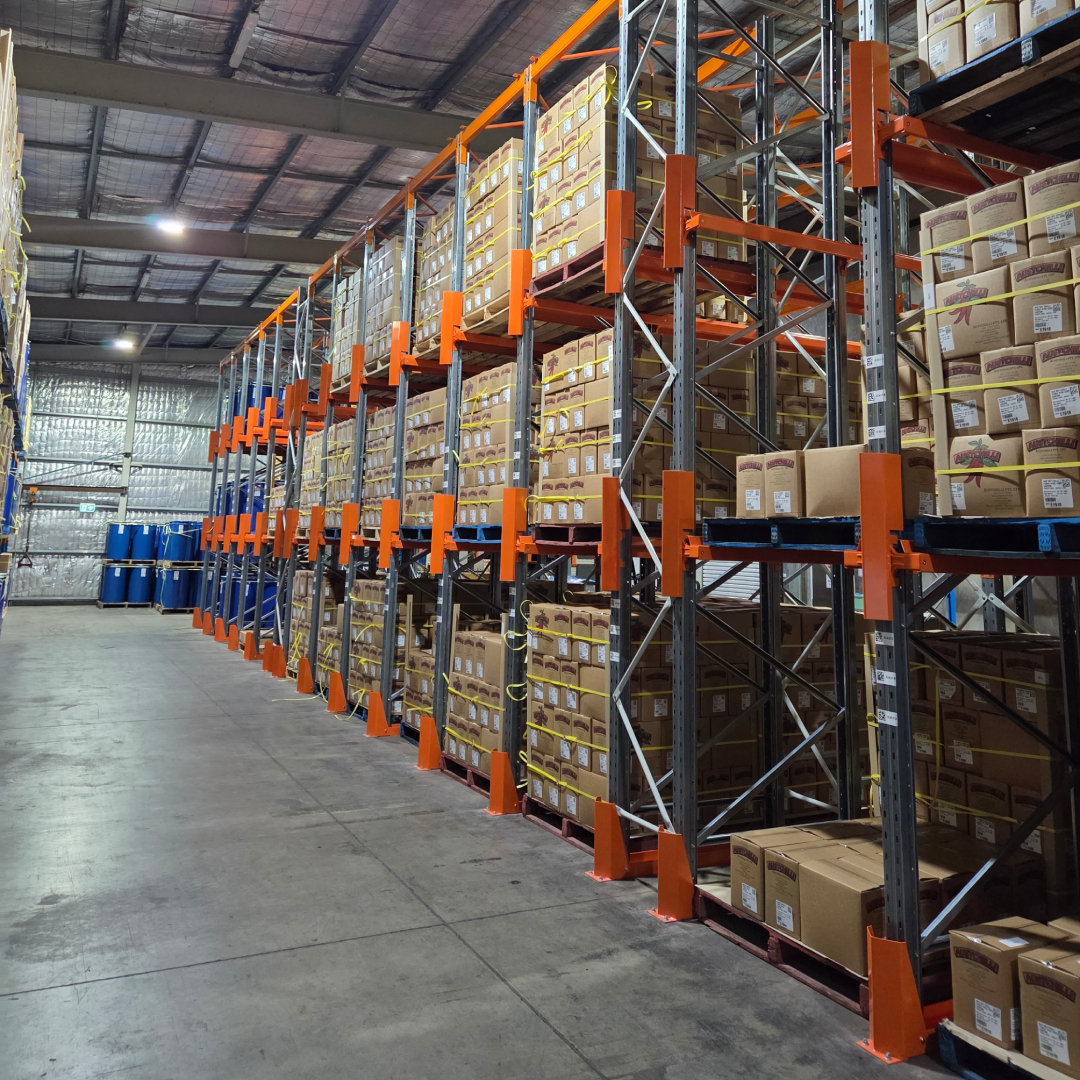Product Details
How does drive-in racking work?
Unlike selective racking systems that require aisles between every row, drive-in racking eliminates the need for multiple aisles. Instead, pallets are stored in continuous lanes (or “bays”) supported by horizontal rails, allowing for much greater storage density.
Forklifts drive directly into the racking structure to load and retrieve pallets. Inside each lane, horizontal steel rails are mounted on both sides to support the pallets and guide the forklift during placement. Operators typically start loading from the back of the lane and work their way forward, carefully positioning each pallet on the rails.
When retrieving stock, the process is reversed—the last pallet loaded is the first one removed, following the First-In, Last-Out (FILO) method. The result is a highly efficient, space-saving system that keeps your warehouse organised while protecting your inventory.
Types of Drive-In Racking:
Choosing the right configuration is essential to maximise efficiency. Here are the primary options:
- Single Entry Drive-In Racking – A straightforward design with a single aisle for both loading and unloading—ideal for FILO (First-In, Last-Out) operations with consistent product rotation.
- Drive-Through Racking – Unlike its name, this has nothing to do with fast food. Drive-through racking is accessible from both ends, allowing forklifts to enter from one side and exit the other. This improves pallet accessibility and operational flexibility.
Shipping & Returns
Do you need freight? To get a quote online, simply add your item/s to the cart and enter your delivery location and preferences to receive a price. Delivery time frames will vary depending on the item/s and destination.
Returns including faulty or damaged goods
Please note that change of mind returns will only be considered within 30 days from date of purchase and Global Industrial will not be responsible for any expenses related to the return freight.
You should always check your goods as soon as they are delivered to you to ensure they are what you ordered and they are not damaged or faulty. In this situation, please contact us straight away with photos or further information and will endeavor to rectify the issue right away.
Click & Collect
Easily collect from one of our warehouses located in Melbourne, Sydney, Brisbane or Perth. Pickup is available Monday to Friday 8:00am to 4:00pm.
Home & Business Deliveries
With a nationwide network of multiple carriers, we’re sure to find an affordable solution to freight anywhere around Australia.
Freight Depot Pickup
Collection from a freight depot is an affordable alternative to home deliveries for heavy and bulky items.
Additional Information
Planning Your Drive-In Racking Layout: Key Specifications.
To assist with the planning and design of your drive-in racking system, here are some standard specifications and design considerations:
- Frame Spacing: Standard distance between frames is 1350mm, allowing for optimal forklift access and pallet stability.
- Rail Spacing: The standard distance between pallet rails is 1050mm, designed to suit most standard pallet sizes.
- Rail Type: Our systems use a S-75mm rail as standard, offering strength and durability for high-density storage.
- Pallet Clearance: As a general rule, allow for 100mm – 150mm of clearance between the top of each pallet and the underside of the rail above. This clearance may vary depending on the height of each level from the ground, but rest assured—all configurations are designed to comply with AS 4084:203 and FEM standards for safety and functionality.
- Floor Rail: A floor-mounted rail is included as standard to guide pallets during placement and enhance system stability. This can be excluded upon request.
- Column Guards / Pallet Deflectors: For added protection, 400mm high column guards are supplied at the front of each frame set to minimise forklift impact and preserve structural integrity.
Things to Consider Before Choosing Drive-In Racking.
While drive-in racking is incredibly efficient, it may not suit every operation:
- Limited Access: With FILO storage, only the front pallet is immediately accessible, which may not align with all inventory management practices.
- Higher Forklift Impact Risk: Frequent forklift entry into the structure increases the chance of accidental damage. We strongly recommend integrating protective elements like guard posts, bumpers, and clear signage during installation.
If you’re unsure how these specifications apply to your warehouse, our team can work with you to customise the layout to your exact requirements. Contact us today for a tailored design consultation.
We accept cash, Visa/Mastercard and direct deposit. Amex is not accepted.






















